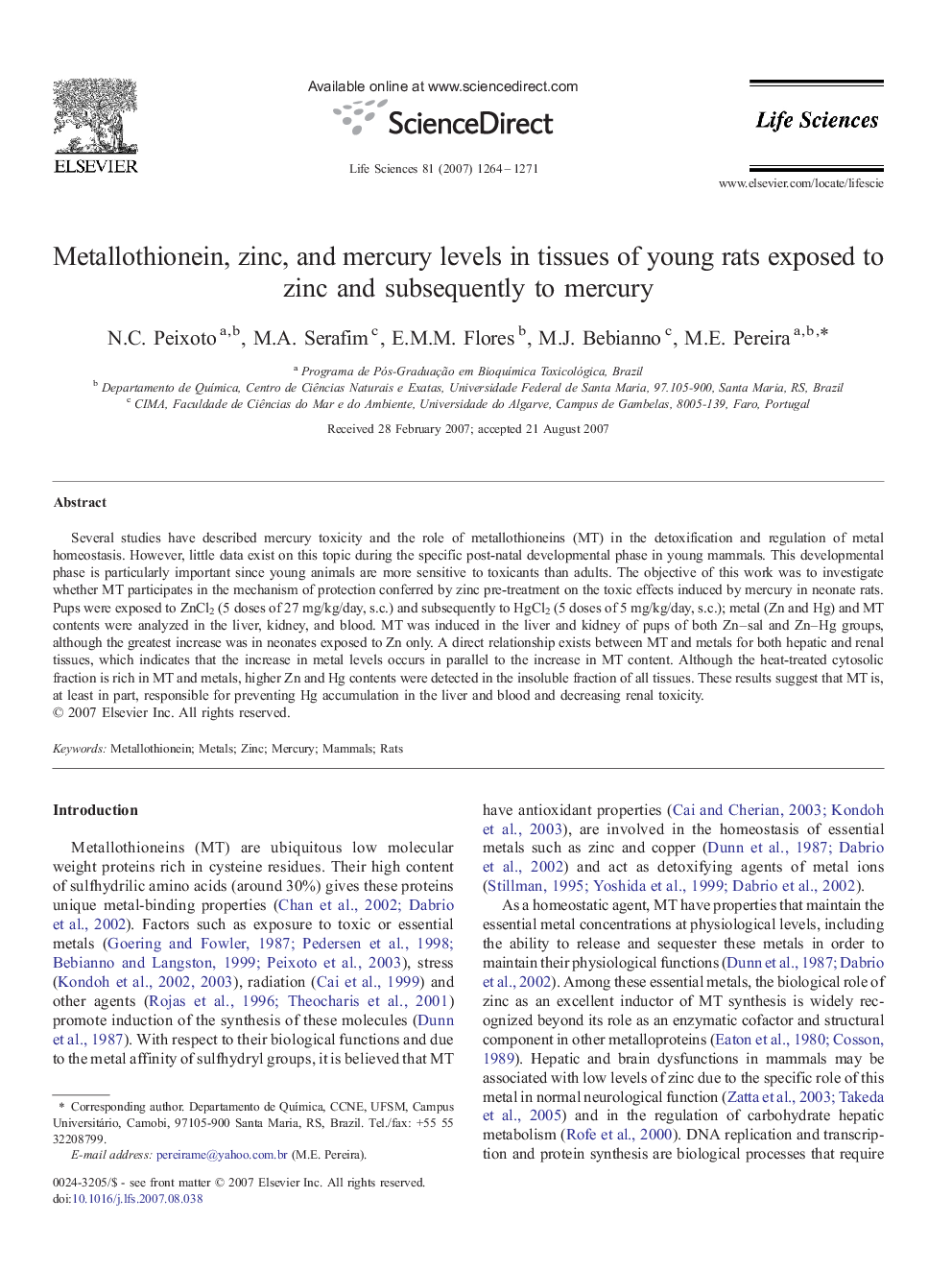| Article ID | Journal | Published Year | Pages | File Type |
|---|---|---|---|---|
| 2553963 | Life Sciences | 2007 | 8 Pages |
Several studies have described mercury toxicity and the role of metallothioneins (MT) in the detoxification and regulation of metal homeostasis. However, little data exist on this topic during the specific post-natal developmental phase in young mammals. This developmental phase is particularly important since young animals are more sensitive to toxicants than adults. The objective of this work was to investigate whether MT participates in the mechanism of protection conferred by zinc pre-treatment on the toxic effects induced by mercury in neonate rats. Pups were exposed to ZnCl2 (5 doses of 27 mg/kg/day, s.c.) and subsequently to HgCl2 (5 doses of 5 mg/kg/day, s.c.); metal (Zn and Hg) and MT contents were analyzed in the liver, kidney, and blood. MT was induced in the liver and kidney of pups of both Zn–sal and Zn–Hg groups, although the greatest increase was in neonates exposed to Zn only. A direct relationship exists between MT and metals for both hepatic and renal tissues, which indicates that the increase in metal levels occurs in parallel to the increase in MT content. Although the heat-treated cytosolic fraction is rich in MT and metals, higher Zn and Hg contents were detected in the insoluble fraction of all tissues. These results suggest that MT is, at least in part, responsible for preventing Hg accumulation in the liver and blood and decreasing renal toxicity.
